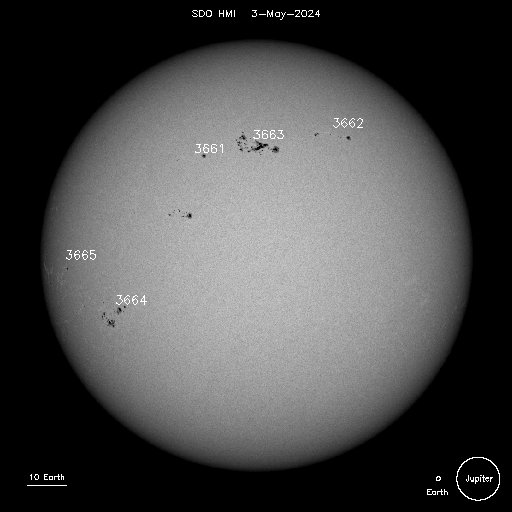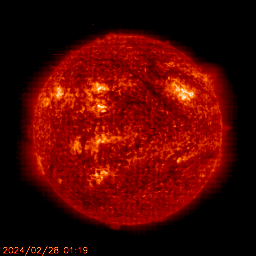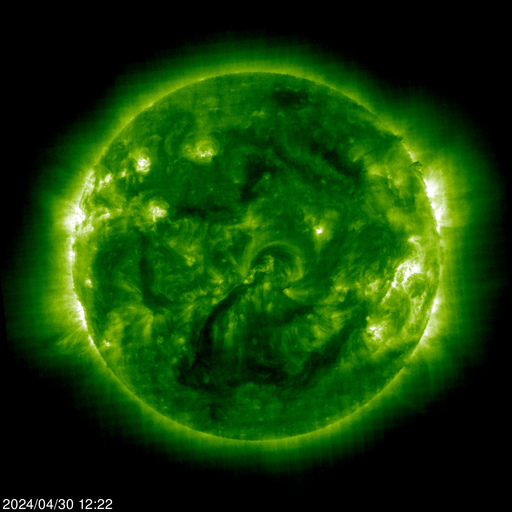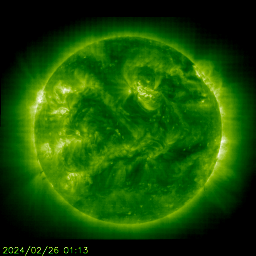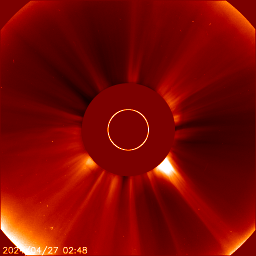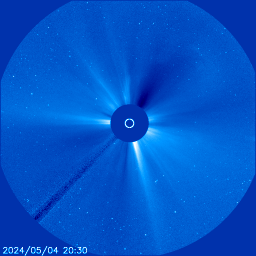ATTENTION :
Il convient de NE JAMAIS vouloir observer le Soleil sans un matériel adapté et les protections de sécurité adéquates.
Toute brulure de l'oeil serait inodore, instantannée et irréversible !
Et même si vous avez 2 yeux, ne tentez jamais l'expérience !!!!
Le matériel d'observation dédié à l'observation du Soleil permet généralement de réduire de 99,999% la puissance lumineuse du Soleil.
Un masque de soudeur ou une paire de lunette de Soleil de très bonne qualité ne permet absolument pas d'atteindre un tel niveau de sécurité.
A proscrire impérativement.
Présentation du Soleil sur la page dédiée
Plus de détails sur la mission SOHO (Solar and Heliospéric Observatory) sur le site du CNES et/ou sur le site de la NASA
Les dernières images :
|
MDI Sunspots : permet de voir les "tâches solaires"
|
|
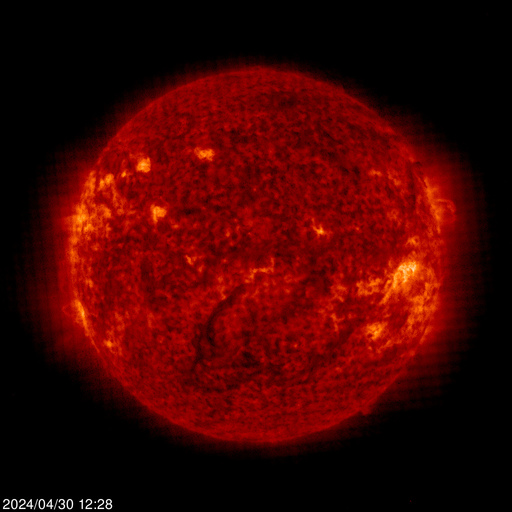 |
EIT 304 : 304 EIT (Extreme ultraviolet Imaging Telescope) images the solar atmosphere at several wavelengths, and therefore, shows solar material at different temperatures. In the images taken at 304 Angstrom the bright material is at 60,000 to 80,000 degrees Kelvin. The hotter the temperature, the higher you look in the solar atmosphere
|
|
EIT 195 : 195 EIT (Extreme ultraviolet Imaging Telescope) images the solar atmosphere at several wavelengths, and therefore, shows solar material at different temperatures. In the images taken at 195 Angstrom the bright material is at 1.5 million degrees. The hotter the temperature, the higher you look in the solar atmosphere
|
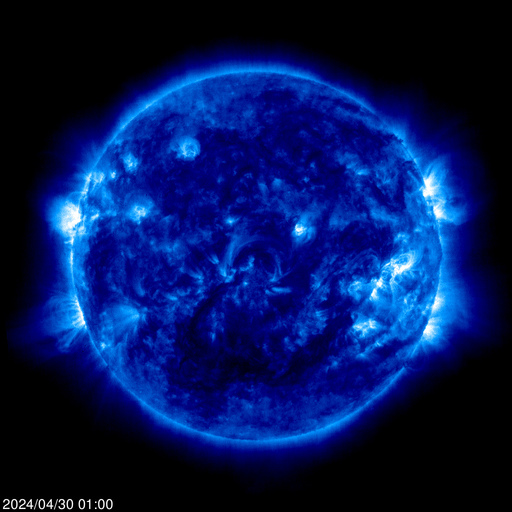 |
EIT 171 : 171 EIT (Extreme ultraviolet Imaging Telescope) images the solar atmosphere at several wavelengths, and therefore, shows solar material at different temperatures. In the images taken at 171 Angstrom the bright material is at 1 million degrees. The hotter the temperature, the higher you look in the solar atmosphere.
|
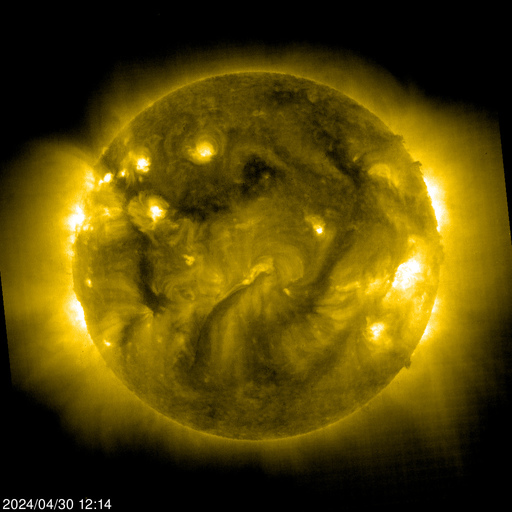 |
EIT 284 : 284 EIT (Extreme ultraviolet Imaging Telescope) images the solar atmosphere at several wavelengths, and therefore, shows solar material at different temperatures. In the images taken at 284 Angstrom the bright material is at 2 million degrees. The hotter the temperature, the higher you look in the solar atmosphere.
|
 |
HMI : The MDI (Michelson Doppler Imager) images shown here are taken in the continuum near the Ni I 6768 Angstrom line. The most prominent features are the sunspots. This is very much how the Sun looks like in the visible range of the spectrum (for example, looking at it using special 'eclipse' glasses: Remember, do not ever look directly at the Sun!).
|
 |
HMI Mag : The magnetogram image shows the magnetic field in the solar photosphere, with black and white indicating opposite polarities.
|
 |
Coronographe Spectométrique à grand angle LASCO (Large Angle Spectrometric Coronagraph) is able to take images of the solar corona by blocking the light coming directly from the Sun with an occulter disk, creating an artificial eclipse within the instrument itself. The position of the solar disk is indicated in the images by the white circle. The most prominent feature of the corona are usually the coronal streamers, those nearly radial bands that can be seen both in C2 and C3. Occasionally, a coronal mass ejection can be seen being expelled away from the Sun and crossing the fields of view of both coronagraphs. The shadow crossing from the lower left corner to the center of the image is the support for the occulter disk. C2 : couronne solaire jusqu'à 8.4 millions de kiomètres
|
 |
C3 : plus grand angle, jusqu'à 45 millions de kilomètres
|

